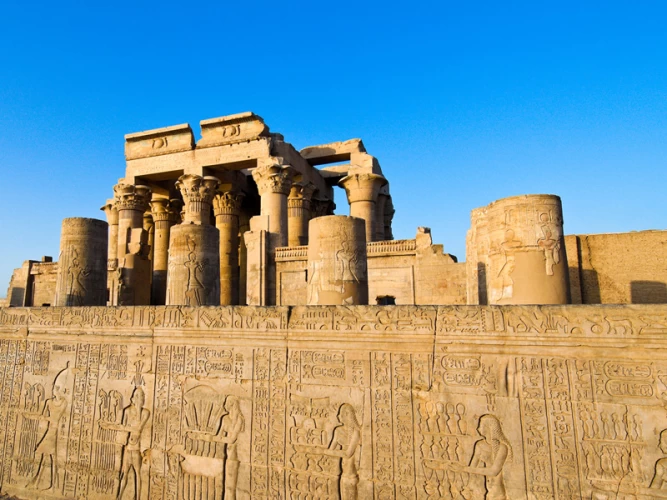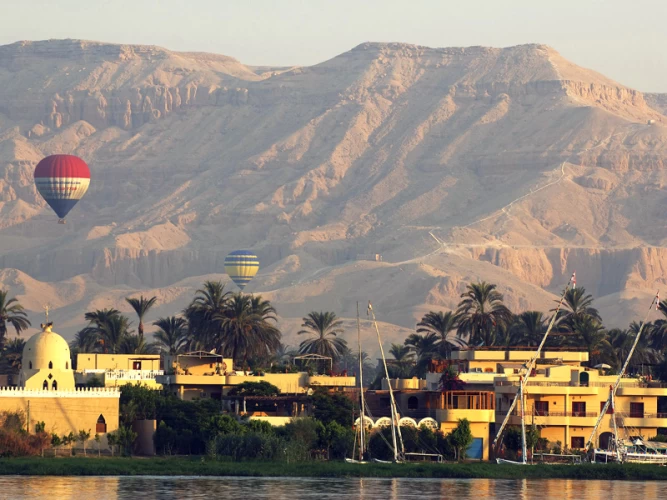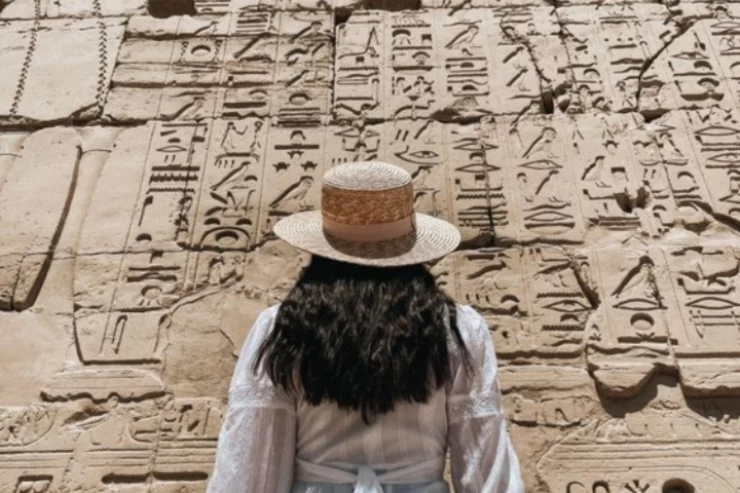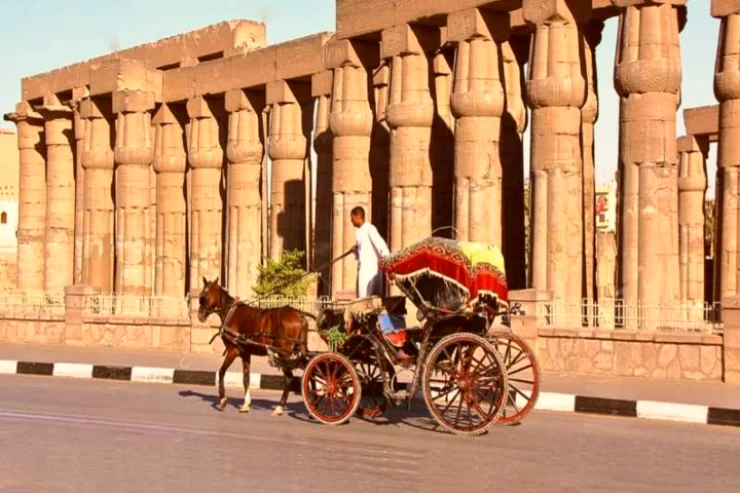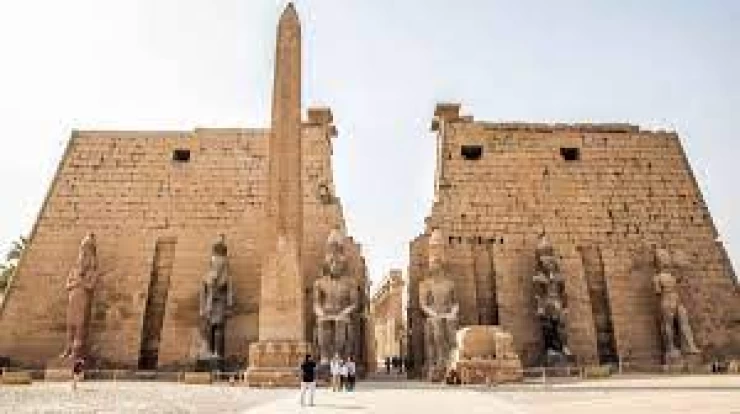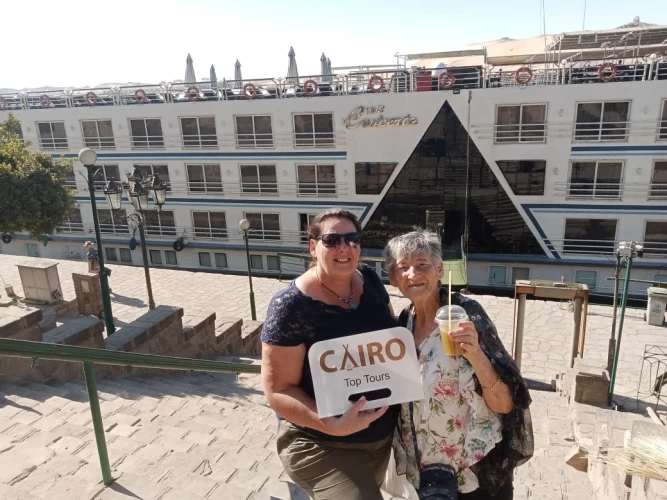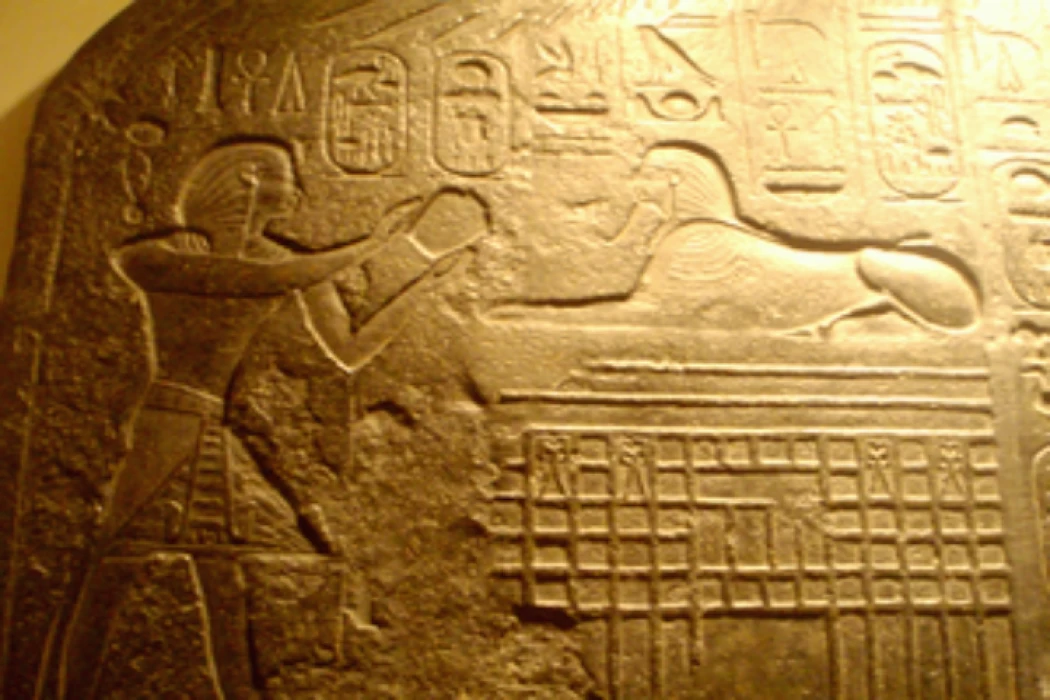
Tomb of King Tuthmosis IV in Luxor
Tomb of King Tuthmosis IV in Luxor
The tomb was discovered by the English scientist Howard Carter in 1903 AD.
The architectural design in the form of the letter L “arched axis” is the design of the royal cemetery, as all royal tombs in the Valley of the Kings in the era of the 18th Dynasty were built on the same design of the arched axis.
Where the tomb begins with 2 stairs down, each stairway leads to a corridor and is met by a compound corridor at the column hall room, then a corridor down by 90 degrees, then the waiting room for the priests and the family, then at an angle of 90 degrees we find the mummy’s burial chamber, which contains the royal sarcophagus and contains 6 stone columns And 4 small rooms.
On the walls of the antechamber, you will see an inscription of King Tuthmosis IV with a group of ancient Egyptian deities that differ according to the clothes worn by the Pharaonic king.
You will see reliefs at the lower well chamber of the king with the goddess Osiris, Anubis, and Hathor, and the ceilings of the room are painted with yellow stars on a blue background.
In the antechamber, you will see an inscription of King Thutmose IV receiving Osiris, Anubis, and Hathor, and then texts in the hieratic language.
When you enter the burial chamber, you will see a small-sized kotin, the pharaonic magic niches were used to place them in the pharaonic royal tombs, starting from the 18th dynasty.
The mummy of Thutmose IV:
The mummy of King Thutmose IV was discovered in 1898 AD by archaeologist Victor Lort during excavations and research in the tomb of King Amenhotep II No. 35 in the Valley of the Kings. After analyzing the mummy of the king, it was discovered that he died at the age of 30 after suffering from a range of diseases.
Latest Articles
Admin
Seabourn Sojourn Cruise Stops in Safaga Port
The Seabourn Sojourn, the flagship vessel of Seabourn Cruise Line's ultra-luxury fleet, was built in 2008 at the T. Mariotti shipyard in Genoa, Italy. Measuring 198 metres, it can accommodate up to 450 guests in its 225 spacious all-suite staterooms.
Admin
Norwegian Sky Cruise Stops in Safaga Port
Norwegian Cruise Line operates a cruise ship called the Norwegian Sky. It was constructed in 1999 and can accommodate 2,004 passengers in addition to 878 crew members. The ship has several dining establishments, lounges and bars, a spa and fitness center, swimming pools, and a number of entertainment areas.
Admin
Explora II Cruise Stops in Safaga Port
Explora II, the second vessel in the Explora Journeys fleet, sets sail in 2024 to redefine luxury cruising. With 461 ocean-front suites, 9 culinary experiences, and 4 pools, this haven of sophistication and sustainability promises an unforgettable "Ocean State of Mind" journey to inspiring destinations.
Admin
Mein Schiff 6 Cruise Stops in Safaga Port
The Mein Schiff 6 is the latest cruise ship in the renowned TUI Cruises fleet, offering passengers a luxurious and sophisticated cruise experience. At 315 metres long, this floating resort features a range of dining options, entertainment, and recreational facilities, including a spa, fitness centre, and sports amenities.
Admin
Mein Schiff 4 Cruise Stops in Safaga Port
When the Mein Schiff 4 cruise ship docks in Safaga, Egypt, passengers are granted access to a realm of ancient wonders. Aboard this state-of-the-art vessel, guests can embark on meticulously curated shore excursions that showcase the region's most iconic landmarks, including the Giza Pyramids, the enigmatic Sphinx, and the remarkable tombs and temples of the Valley of the Kings in Luxor.
Admin
MS Europa Cruise Stops in Safaga Port
The Silver Moon, Silversea's latest flagship, is a luxury cruise ship that offers an exceptional travel experience for Venezuelans exploring Egypt. With a capacity of 596 guests and an impressive 40,700 gross tonnes, the Silver Moon maintains the small-ship intimacy and spacious all-suite accommodations that are the hallmarks of the Silversea brand.






